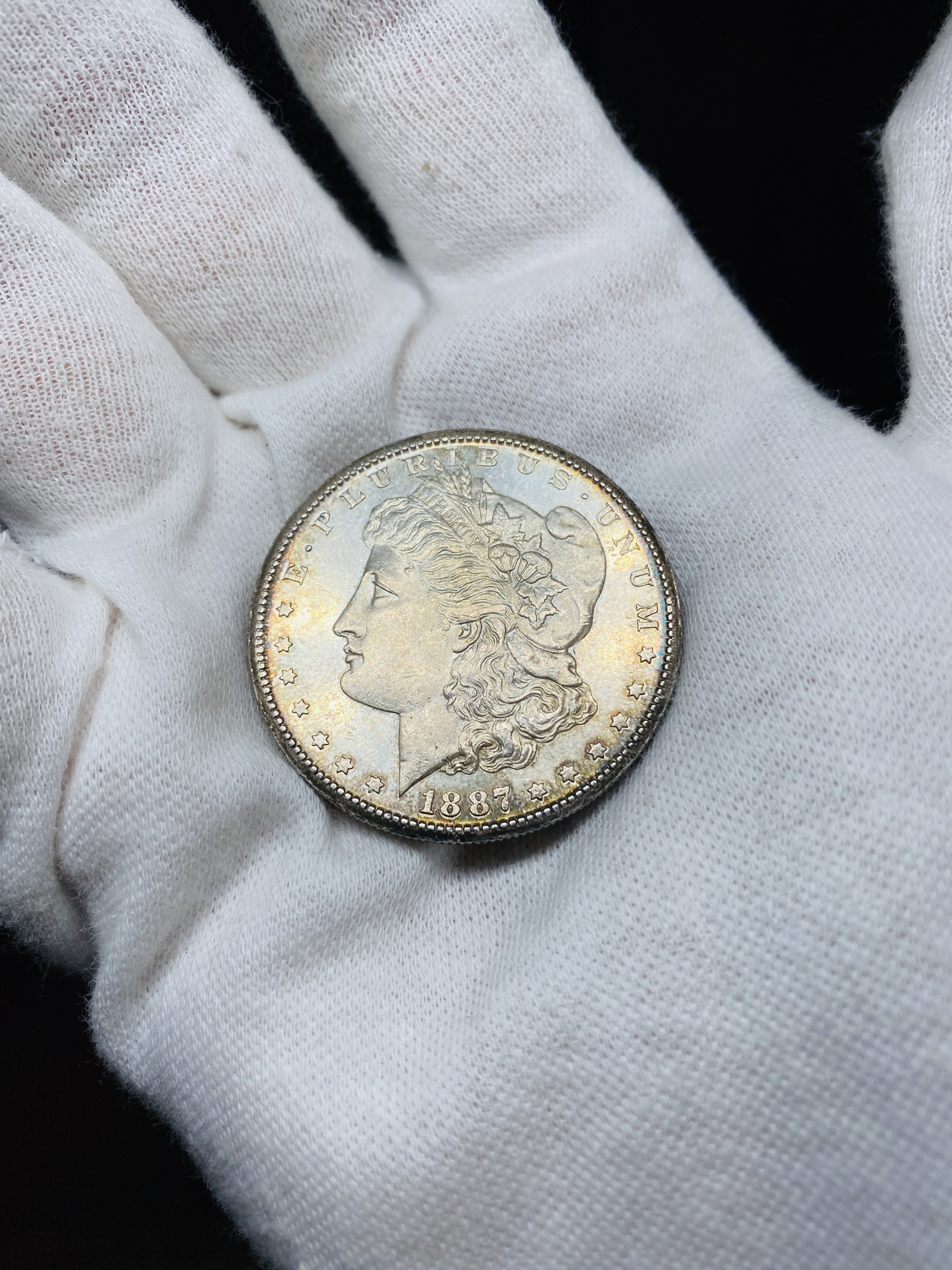Raw 1887 S - Filed Rim?
 Flackthat
Posts: 412 ✭✭✭✭
Flackthat
Posts: 412 ✭✭✭✭
Thoughts on the rim of this 1887 S


0
 Flackthat
Posts: 412 ✭✭✭✭
Flackthat
Posts: 412 ✭✭✭✭
Thoughts on the rim of this 1887 S


Comments
Looks like it was in a belt buckle or similar.
I concur with this assessment.
"It's like God, Family, Country, except Sticker, Plastic, Coin."
Yep....appears to have been 'press fit' into a holder...i.e. belt buckle or similar jewelry...Cheers, RickO
Yes
Edit to add: pushed in from the back of the buckle, maybe?
I disagree with all of you. This looks like a perfectly normal edge with some rim nicks that have pushed up metal. A rim filed edge looks nothing like this.
The scratches from the file can either be perpendicular or parallel to the rim. Looking for images.
No one has said or mentioned the rim was filed except the OP! I stand by my opinion!
@amwldcoin said: "No one has said or mentioned the rim was filed except the OP! I stand by my opinion!"
I disagreed with the members who agreed with the OP and those who thought it was mounted in something!
No matter how you slice it or dice it, that's a nice looking 1887s Morgan.
Clean cheeks
partial collar or railroad rim?
I can not tell from your pics, can you take pic of reeding on edge at the area you consider filed?
I stand by my assessment. Shame.
"It's like God, Family, Country, except Sticker, Plastic, Coin."
Margins around the perimeter appears to be different color/tone then the rest of the surface. Which has weirdly clean looking appearance.
This can happen by something protecting/hiding the perimeter, used in jewelry, belt buckle, some sort of album, etc.
OT.
I see quite a few blue labeled slabs in the background. What are they, if I may ask?
The rims appear to be normal for an 1887-S Morgan. The general rim bevel can be caused when the upset operation on the blank is less effective than normal. And the thin wire rim can be caused when the struck coin is pushed out of the collar and the sliding tends to pull the metal like that. So in this case the upper (hammer) die is the reverse and the obverse is the bottom (anvil) die.
PS I am slowly learning to do this (still have a long way to go) but I have worked with authenticators/graders who can tell the Mint of a Morgan dollar by looking at its RIM only! They can also tell by the appearance of its surface luster. Advanced Morgan collectors can do the same thing. The rims on the OP's coin look perfectly normal with a few hits.
One finalizer could even guess the date of an 1866 - 1908 $5 Liberty correctly 7 times out of 10 by just seeing its reverse!!! The edge thing can probably be learned rather quickly if a John Roberts had you and I for the day with hundreds of BU $ from the mints. CC dollars are the easiest because you cannot miss their luster.